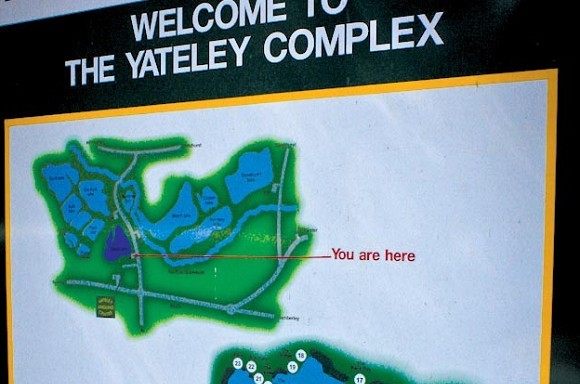
11 things you should do when you arrive to your chosen venue
Okay, so you've turned up at your chosen venue but what do you do next? Avid Carp's Christian Kessler reveals all...
1. Do your homework
It’s essential that you do a bit of homework. Give the bailiff a call, log onto the website, have a look at the venue on Google Maps. All these things could swing the odds in your favour and, if others anglers are just turning up and winging it, you will have an advantage before you’ve even got to the lake.
2. Get there early
If you can get to the venue earlier than everybody else, there’s a good chance you will have a pick of the swims. Take a walk around the venue and try and find out where the carp may be holding. Plus, carp tend to be extremely active at first light so, there’s a good chance you will find out where the carp are holding.
3. Take your time
Take your time and walk around the lake until you find signs of carp. After a couple of laps of the lake, you will see some kind of sign. Look out for fizzing, showing fish, bow waves and anything else that could indicate that carp are in the area.
4. Select the right swim
Can’t find any signs of carp? Obviously you can take a whole host of factors into account but I generally like to head for the quietest, most secluded area of the lake. If a swim gets neglected on a regular basis, there’s a good chance the carp will head in there to seek sanctuary. Don’t forget you can always move somewhere else.
5. Grab your gear
Next go and get the rest of your gear. I will generally just grab the stuff I need for a day session, unless the car park is a massive walk from the carp and I don’t fancy doing the trip again. If you do take the rest of your gear from the car, make sure you leave your bivvy and everything else on the barrow and concentrate on getting the rods in position. The longer the rods are in the water, the more chance you’ve got of catching. Plus, if you don’t put your bivvy up straight away, you’ll be able to move promptly and efficiently. Perfect.
6. Lead about
You don’t need to necessarily get the marker rod out, it’s still important to have a lead around in the swim to get an idea what the lakebed is made up of. A couple of casts with a bare lead will cause minimal disturbance and hopefully give you a few clues about the presentation you’re going to be needing. You can then make the decision as to the kind of approach and rig you’re going to use. Personally, if I’m aiming to nick a bite quickly, I usually just try and get a couple of ‘donks’ when casting about. As long as the lead goes down with a ‘’donk’, I’m confident the rig is going to be sitting pretty on the bottom.
7. Select your rig
More often than not, I will start with a super simple presentation like a KD Rig or a simple Knotless Knot. If I feel like the fish are getting away with it, I may alter the rig to suit the situation. As far as I’m concerned though, I think it’s much more important to find the fish. Lots of anglers get extremely confused by rigs and rig components when watercraft and location is usually what affects success or failure.
8. Start with bags
Don’t get carried away with the amount of bait you introduce. I like to start with PVA bags to gauge how the fish are feeding then, depending on the carp’s response, I may decided to spod out bait. You can’t take out what you’ve put in. I’ve seen anglers introducing kilos of bait before they’ve even gauged how the carp are feeding. This can ruin your chance of a bite.
9. Get all three rods in position
Finally, you will have all three rods in position. Always make sure you are completely happy with where your rods are and if there’s any doubt in your mind recast them.
10. Get your house in order
I genuinely believe anglers who are organised catch more carp. My bivvy is always super-tidy so I know exactly where everything is. Use luggage that slides neatly under your bedchair, keeping all your gear organised and ensuring there’s little clutter in the bivvy.
11. Never be afraid to tweak.
If you’re happy that fish are in front of you and feeding, but you’re not getting bites, never be afraid to tweak your approach. Whether it’s a chance in hookbait colour or altering the length of your rig, these things can put bonus fish on the bank. If you’re blanking and you’ve seen no signs of carp, move.













